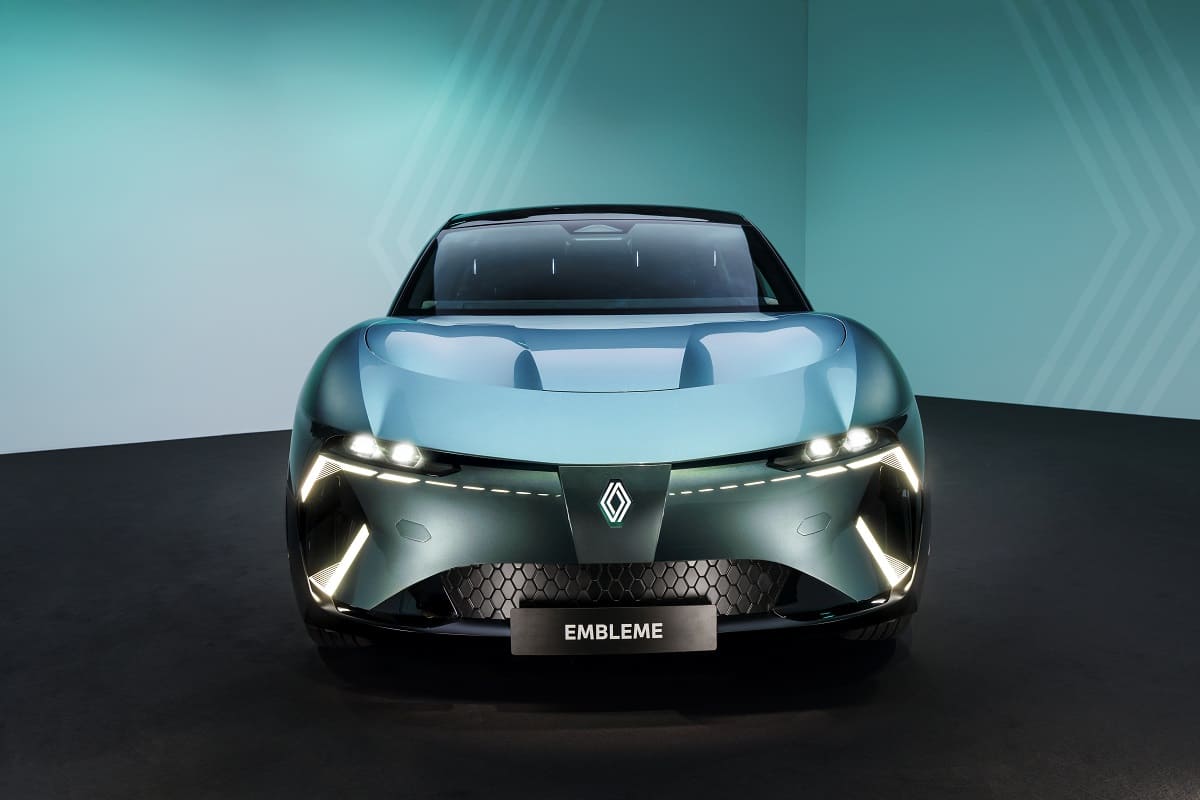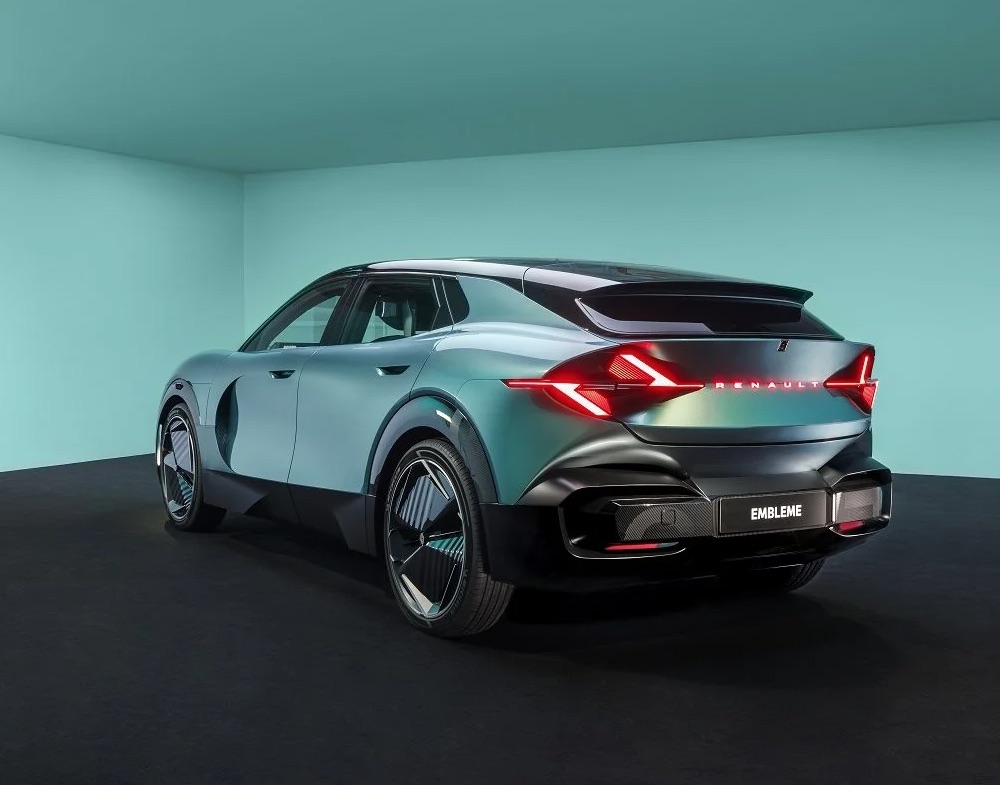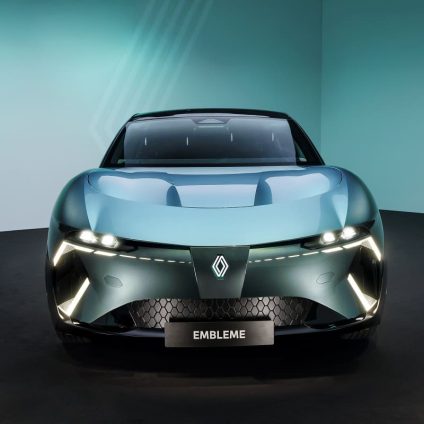Renault Emblème slashes emissions by 90% and is over 90% recyclable, combining electric and hydrogen power with recycled materials

Renault Emblème slashes emissions by 90% and closes the recycling loop
The French group is testing production capacity for a battery and hydrogen-powered car designed to cut CO2 and built with recycled and recyclable materials.
A car that cuts greenhouse gas emissions by 90% would be revolutionary. Imagine the impact on decarbonization. Yet this is no dream: it’s the Renault Emblème project. This futuristic family car aims for sustainability in every phase: eco-design, resource selection, manufacturing, usage, and end of life. The French automaker has committed to achieving net-zero global emissions by 2050, with a milestone target for Europe by 2040.
Developed by Ampere, the Renault Emblème demo car embodies this philosophy. It has already achieved a 70% reduction in component production carbon footprint, incorporates 50% recycled materials, and is made with nearly 100% recyclable components. The result: a 4.80-meter station wagon with a dual-energy electric powertrain combining battery and hydrogen, built for both daily commutes and long journeys.
Measuring car emissions: the life cycle approach
Renault uses a life cycle assessment (LCA) method to calculate a vehicle’s environmental impact across its entire lifespan. The baseline assumes 200,000 km over 15 years, using real-world data. For comparison, the LCA for the Renault Megane E-Tech Electric is 25 tons of CO2e – half the emissions of an equivalent fossil fuel car. For example, the 2019 gasoline-powered Captur emits around 50 tons.
In contrast, the Emblème is estimated to emit only 5 tons of CO2e across its lifecycle – a reduction of roughly 90%, verified by independent experts at the French Institute of Petroleum and New Energies (IFPEN).
This figure includes every phase: raw materials sourcing, vehicle manufacturing, usage, and end-of-life processing such as recycling.
Lighter weight, lower emissions

One of the most effective ways to reduce emissions is to reduce a vehicle’s weight. Lighter cars require less material extraction, less energy for production and transport, and consume less energy on the road. Renault then focused on components that represent 90% of the vehicle’s carbon footprint: battery, steel, aluminum, polymers, electronic components, tires, fuel cell, and hydrogen tank.
This effort required collaboration with supply partners, each responsible for specific parts, contributing to a 70% reduction in material production emissions.
A few standout eco-collaborations
Door handles – AKWEL
Aerodynamically optimized, touch-sensitive door handles are 60% lighter and use a simplified mechanism, cutting 50 components. Made from a single material, they contain 65% recycled content and reduce carbon emissions by 88%.
Body panels – ArcelorMittal
Using advanced high-strength and hot-stamped steels, ArcelorMittal reduced body-in-white weight by 8%. Steel came from recycled and renewable sources. For example, the B-pillar is made with at least 75% circular materials and 100% renewable electricity, reducing CO2e by 69%.
Aluminum doors – Constellium
Aluminum can be endlessly recycled without quality loss. Recycling aluminum for body panels uses just 5% of the energy needed for primary production. Constellium combined recycled and primary aluminum for Emblème, showcasing long-term circularity in automotive aluminum use.
Electronics and battery innovation
The Emblème features a traction inverter using silicon carbide (SiC) technology from STMicroelectronics, offering better efficiency and sustainability than traditional silicon. This switch reduces emissions by 80% and will be powered exclusively by renewable energy by 2027.
The battery, developed by Verkor, emits 72% less CO2 than traditional alternatives, thanks to optimized processes, low-impact energy, and efficient recycling.
Electric and hydrogen: a winning combination
While electric cars are the future, range anxiety remains a concern. Emblème’s engineers addressed this by adding hydrogen power. Hydrogen can generate electricity either via combustion or oxidation in a fuel cell, emitting only water.
The Emblème combines a fuel cell with a battery, each balanced in power to efficiently run the vehicle. This hybrid system offers the benefits of both technologies, improving range.
Its dual-energy setup uses a battery that’s half the size of today’s long-range EVs, which significantly cuts CO2e emissions. For daily driving, it functions like a standard EV with regenerative braking, rooftop solar panels, and plug-in charging. For long trips, the fuel cell kicks in, allowing up to 1,000 km per trip with just two hydrogen refuels – each taking less than five minutes and covering around 350 km.
Closing the loop with circular materials
The Renault Emblème is built with at least 50% post-consumer recycled materials, sourced from end-of-life vehicles and industrial scrap. At end of life, over 90% of its materials can be recovered and reused as new recycled materials in the production cycle.












